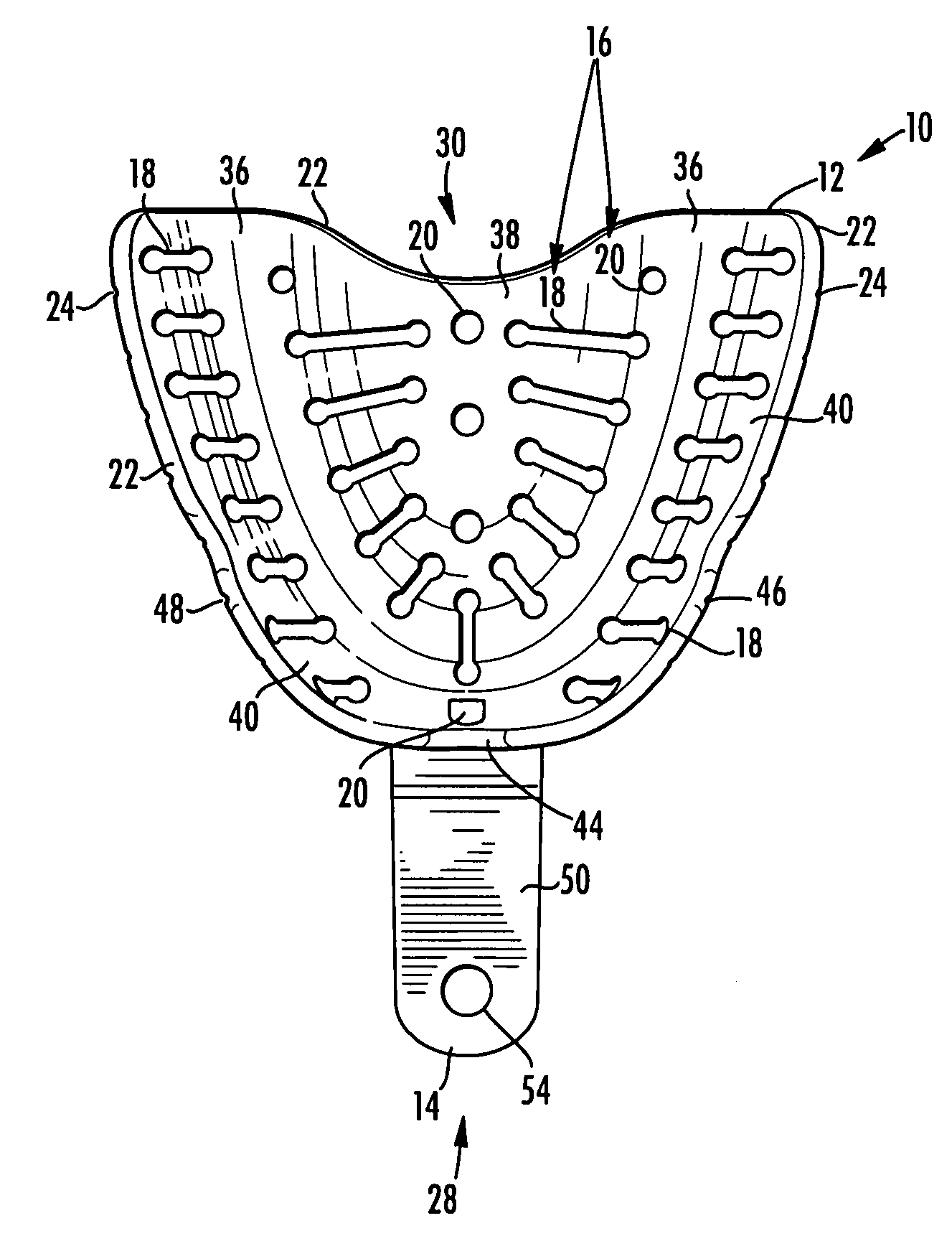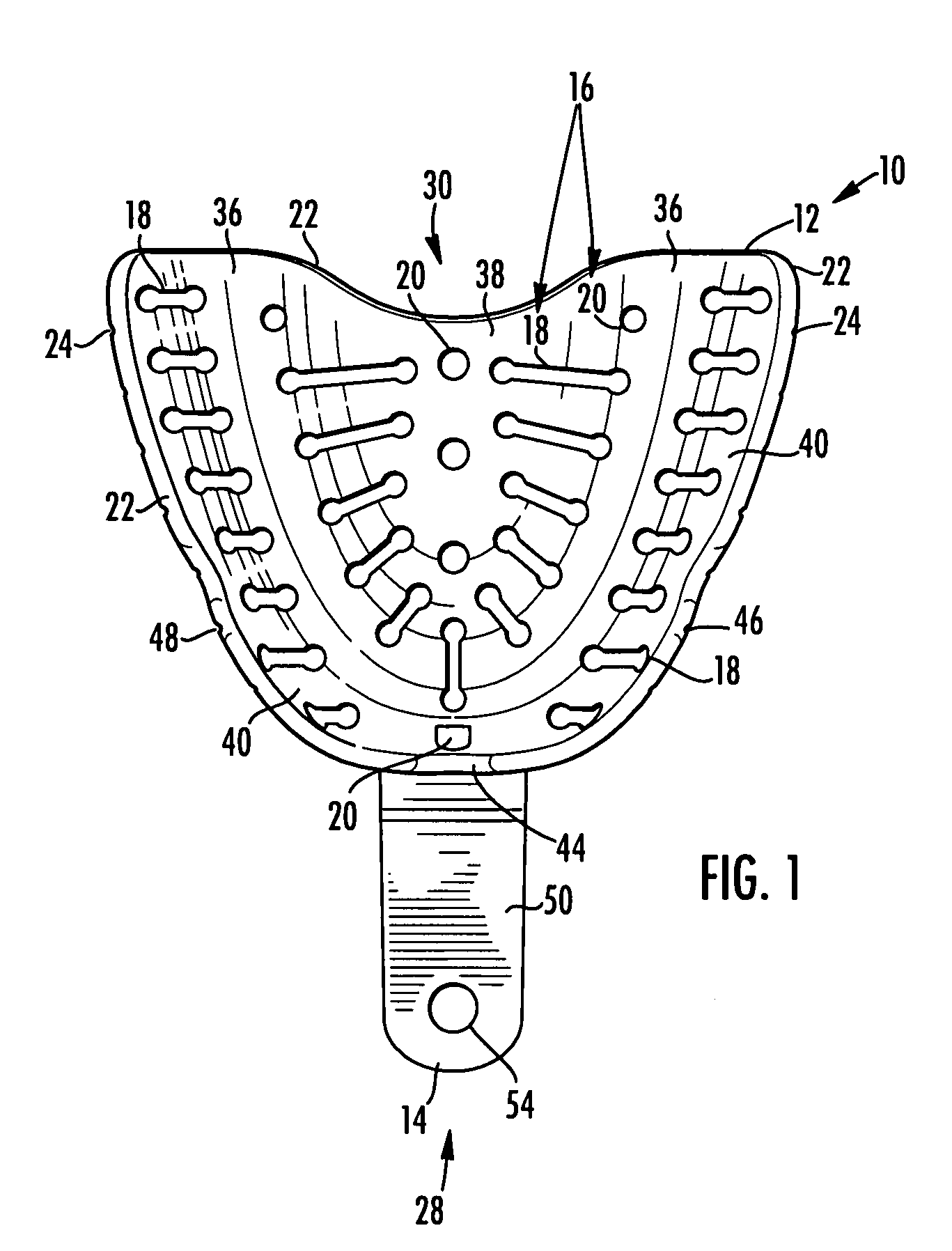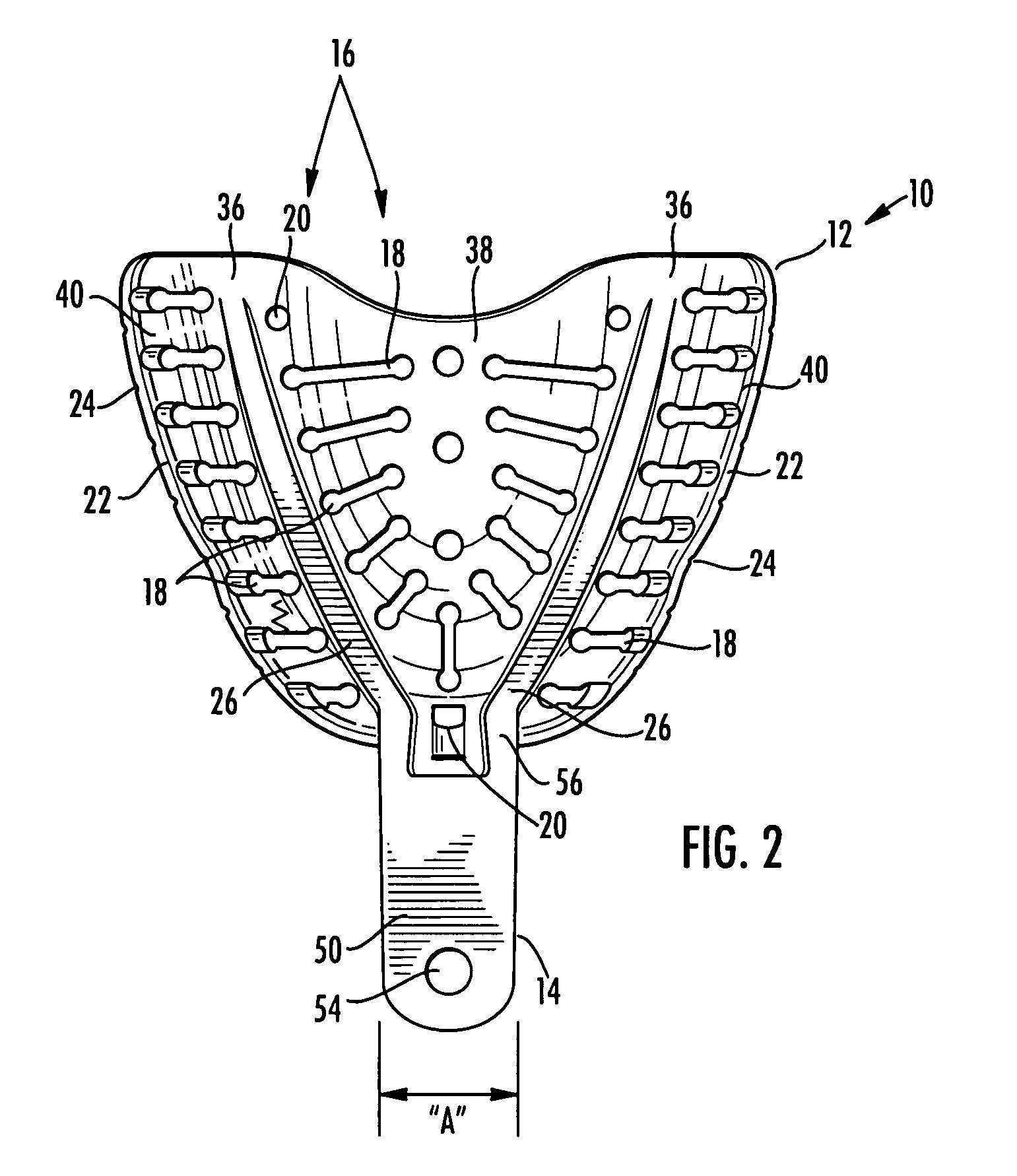Dental tray for obtaining dental impression of edentulous patient
a dental impression and edentulous patient technology, applied in the field of new dental impression tray, can solve the problems of unpleasant patient use of adhesives, discomfort and sometimes gagging, new problems or not working well with today's wide range of impression materials, etc., and achieve the effect of less discomfort, accurate impression and accurate impression
- Summary
- Abstract
- Description
- Claims
- Application Information
AI Technical Summary
Benefits of technology
Problems solved by technology
Method used
Image
Examples
Embodiment Construction
[0028]Referring to the figures of the drawings, wherein like numerals of reference designate like elements throughout the several views, particularly to FIG. 1, there is shown a top view of a dental impression tray 10 to be used in combination with an impression material or a combination of impression materials for obtaining an impression of the jaw and gingiva areas of the mouth of an edentulous patient, where the impression material is not shown. As shown in FIGS. 1 through 12, the dental impression tray 10 comprises a body 12, at least two finger rest beams 26, and a handle 14. As shown in FIG. 1, the body 12 has a body front end 28, a body rear end 30, a predetermined shape of the body 12, and a plurality of body openings 16. FIGS. 1 through 6 show one embodiment of the invention and FIGS. 7 through 12 show a second embodiment of the invention. The predetermined shape of the body 12 accommodates the anatomical shape of the edentulous patient's mouth and is dimensioned and config...
PUM
 Login to View More
Login to View More Abstract
Description
Claims
Application Information
 Login to View More
Login to View More - R&D
- Intellectual Property
- Life Sciences
- Materials
- Tech Scout
- Unparalleled Data Quality
- Higher Quality Content
- 60% Fewer Hallucinations
Browse by: Latest US Patents, China's latest patents, Technical Efficacy Thesaurus, Application Domain, Technology Topic, Popular Technical Reports.
© 2025 PatSnap. All rights reserved.Legal|Privacy policy|Modern Slavery Act Transparency Statement|Sitemap|About US| Contact US: help@patsnap.com



